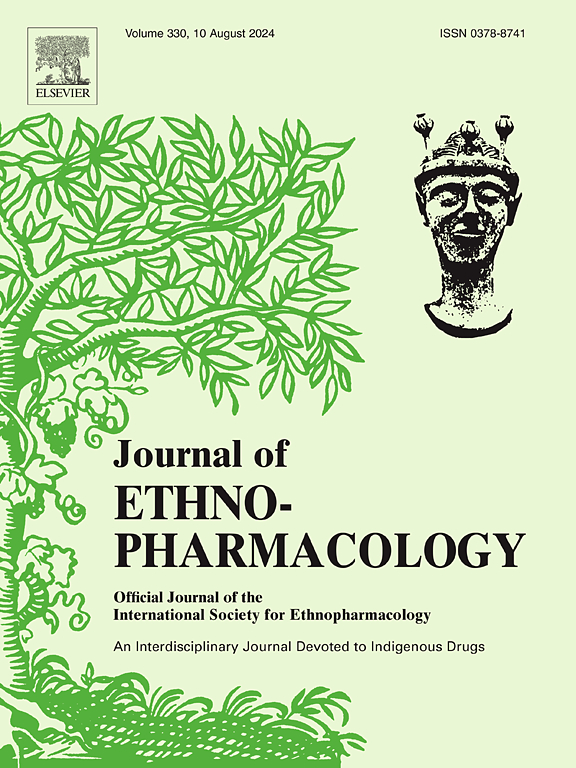Evaluation of anti-hyperuricemic and nephroprotective activities and discovery of new XOD inhibitors of Morus alba L. root bark
IF 4.8
2区 医学
Q1 CHEMISTRY, MEDICINAL
引用次数: 0
Abstract
Ethnopharmacological relevance
As a traditional Chinese medicine, Morus alba L. root bark (MAR) has diuretic and detumescent effects, which is used in prescriptions like Niaoduqing granules for hyperuricemia treatment. However, the anti-hyperuricemic and nephroprotective activities, underlying mechanism and material basis of MAR have not been reported.
Aim of the study
This research aimed to explore the anti-hyperuricemic and nephroprotective activity and mechanism of MAR, along with the pursuit of potential xanthine oxidase (XOD) inhibitors within MAR.
Materials and methods
XOD inhibitory assay and hyperuricemic mice model were employed to screen and estimate the active fraction of MAR. Then, active compositions were isolated and elucidated by diverse separation and spectroscopic techniques. The enzyme inhibition mechanism of the active compositions was investigated by enzyme kinetic and molecular docking.
Results
The ethyl acetate fraction (MAR-EA) showed the strongest inhibitory activity against XOD. In hyperuricemic mice, MAR-EA decreased serum uric acid levels by suppressing XOD activity and modulating renal uric acid transporters (URAT1, GLUT9, ABCG2). Moreover, it alleviated hyperuricemia-induced kidney damage, which may be related to inhibiting the production of inflammatory factors. Noticeably, the combination of MAR-EA with allopurinol showed a synergistic effect. Meanwhile, a Diels-Alder adduct, albanol A (1) was isolated from MAR-EA with excellent XOD inhibition activity (IC50 = 0.116 mg/mL), which was categorized as a mixed-type XOD inhibitor. The molecular docking outcomes demonstrated that albanol A (1) exhibited a desirable interaction with XOD.
Conclusion
This research supports MAR and albanol A as anti-hyperuricemic drug candidates, laying a foundation for further exploration.

求助全文
约1分钟内获得全文
求助全文
来源期刊

Journal of ethnopharmacology
医学-全科医学与补充医学
CiteScore
10.30
自引率
5.60%
发文量
967
审稿时长
77 days
期刊介绍:
The Journal of Ethnopharmacology is dedicated to the exchange of information and understandings about people''s use of plants, fungi, animals, microorganisms and minerals and their biological and pharmacological effects based on the principles established through international conventions. Early people confronted with illness and disease, discovered a wealth of useful therapeutic agents in the plant and animal kingdoms. The empirical knowledge of these medicinal substances and their toxic potential was passed on by oral tradition and sometimes recorded in herbals and other texts on materia medica. Many valuable drugs of today (e.g., atropine, ephedrine, tubocurarine, digoxin, reserpine) came into use through the study of indigenous remedies. Chemists continue to use plant-derived drugs (e.g., morphine, taxol, physostigmine, quinidine, emetine) as prototypes in their attempts to develop more effective and less toxic medicinals.
 求助内容:
求助内容: 应助结果提醒方式:
应助结果提醒方式:


